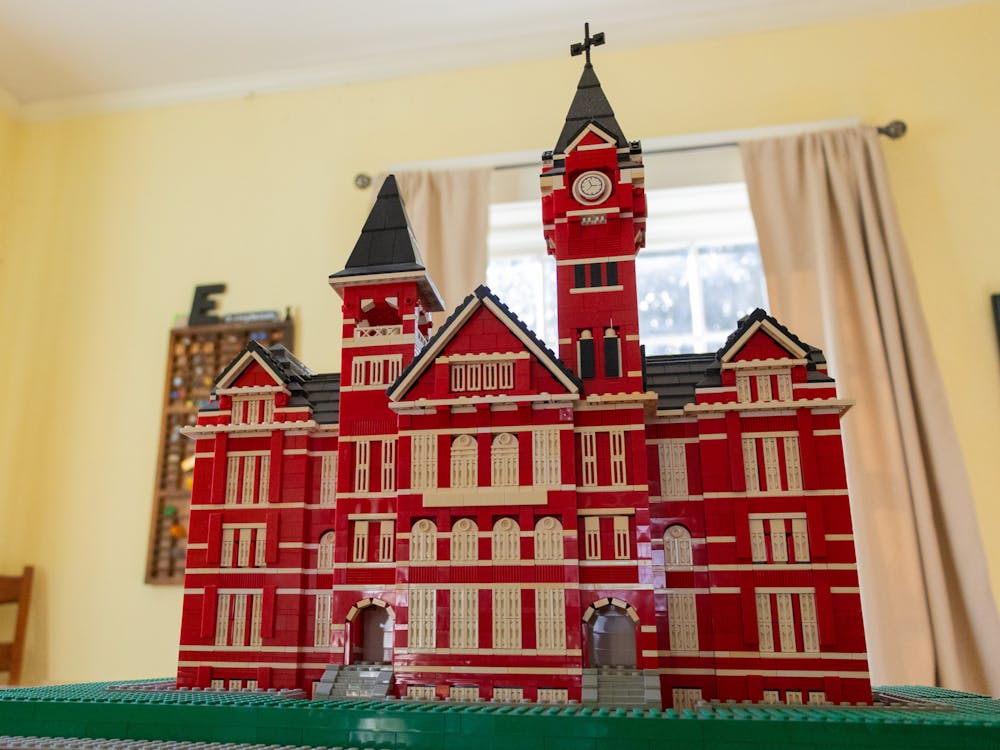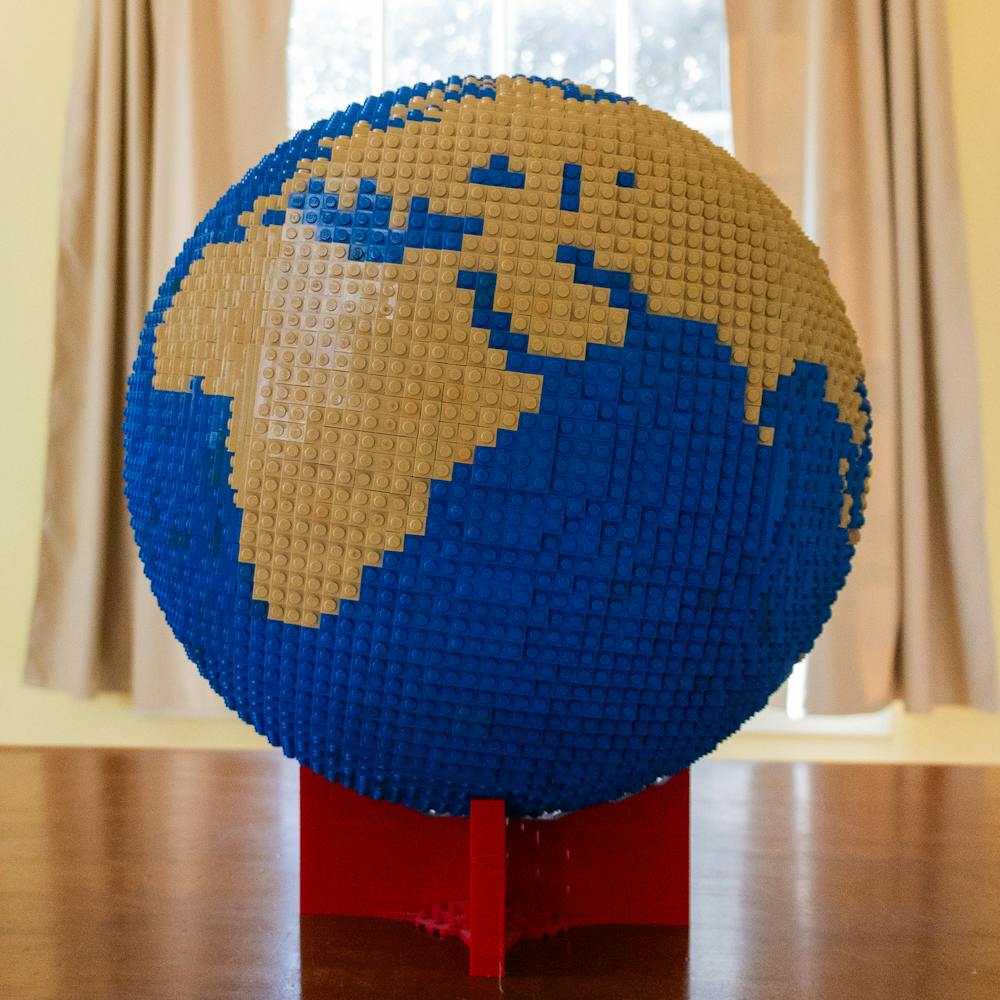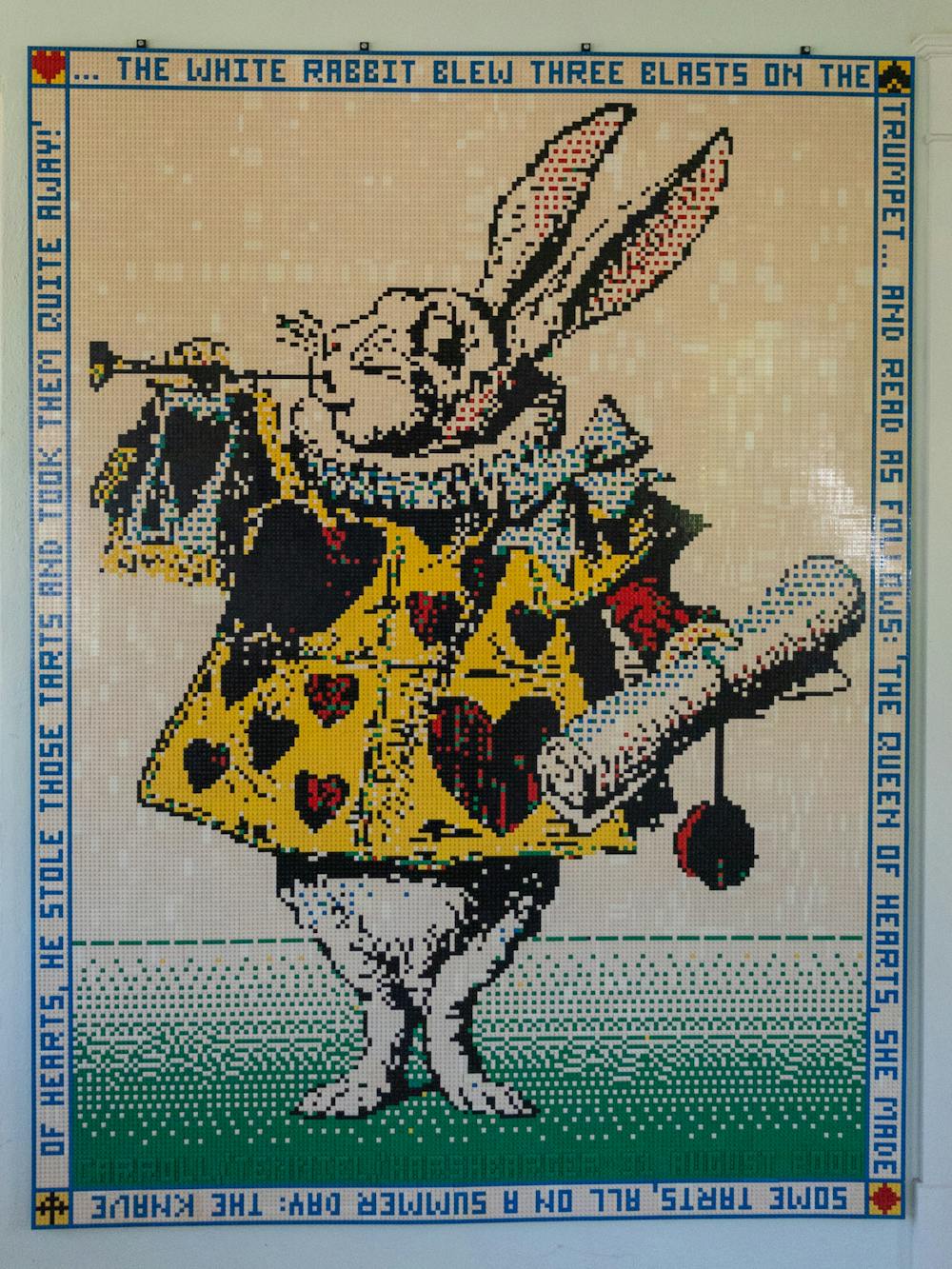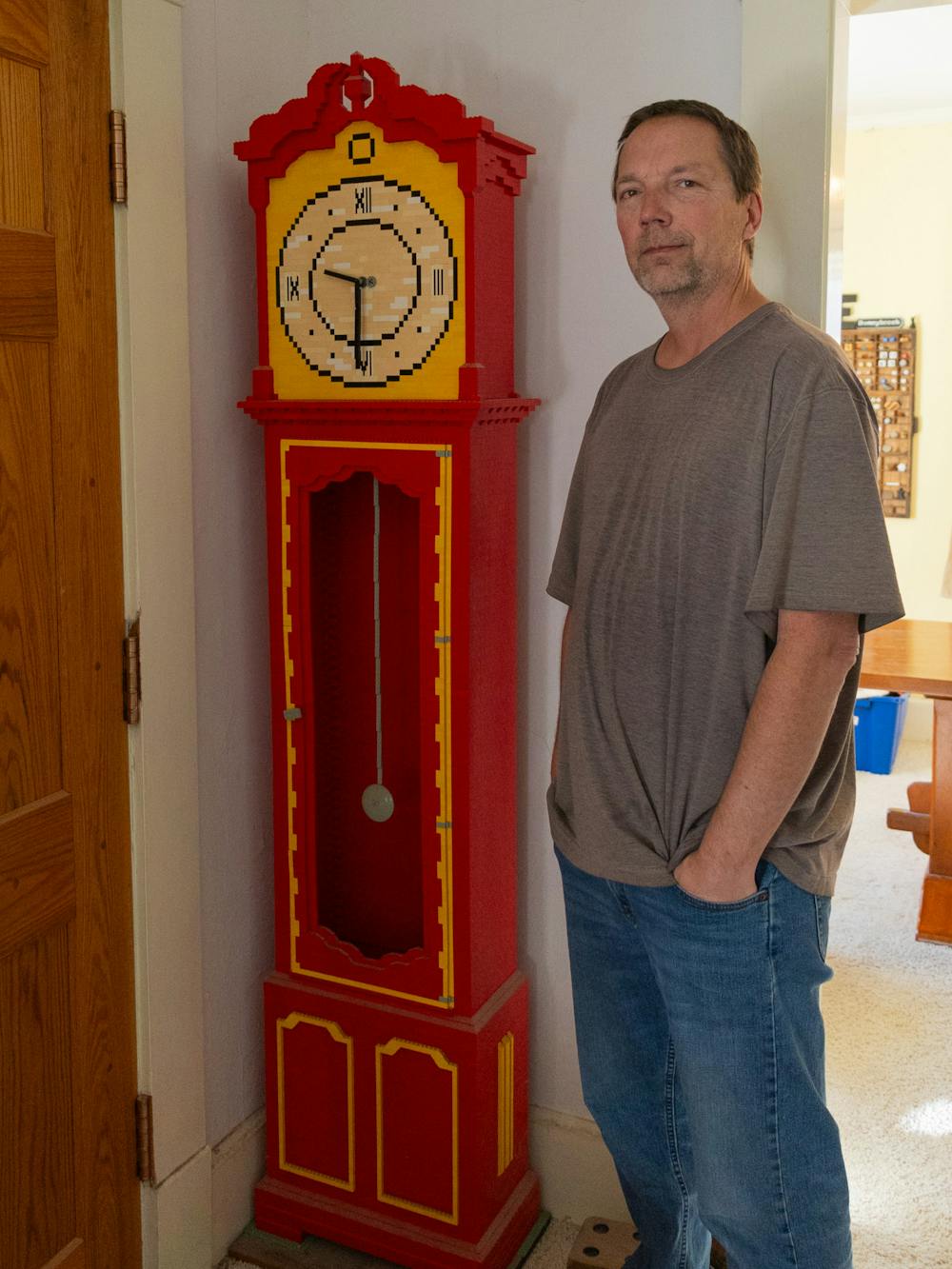Eric Harshbarger, Auburn University math lecturer, previously worked as an "independent Lego builder" and is bridging the gap between his love for Lego and math while utilizing it to connect with his students.
Harshbarger started independent Lego building in 1999. His first project, which started his love for Lego, was at age five after receiving Lego sets for Christmas in the late 1970s. He’s been building and collecting sets since then and has also made a living out of the craft.
“Pretty much after that Christmas, all I wanted were [Lego] sets. My parents got them for me. It was something I enjoyed as a child very much,” Harshbarger said. “When I moved back from the west in the late ‘90s, I decided I wanted to build an R2-D2 that was about the size of a trash can."
Harshbarger, who grew up in Auburn, would frequently walk around the city when he was younger. Walking past Samford Hall, he would often think, “I could build that out of Legos one day.” Since then, he’s taken up walking as a hobby and once walked from his office in Parker Hall to the Tuskegee National Forest and back.

One of his favorite Lego creations was a working grandfather clock. The clock has working mechanics, with gears made of Lego bricks as well. Harshbarger claimed that the clock actually told the time, although it is “about ten seconds off." He also stated that he had to learn how clocks worked and how the weights worked for the pendulum for the build.
“Not only does it look nice but it’s also a feat of engineering. It took a couple months to actually collect the bricks, in some ways it was easier than it was today, and, in some ways, it was harder,” Harshbarger said. “The actual building of something like the grandfather clock takes about two weeks once I have the pieces.”

For his three-dimensional models, Harshbarger would sketch out a two-dimensional drawing and “study them,” not using a build plan, just playing the design out by eye. For mosaics, he would use a computer program that would give him a template that was “similar to paint by number.”
Harshbarger doesn’t keep up with Lego building anymore, but he’s been recognized by a multitude of newspapers, television shows and other forms of media. He “distanced” himself from building but occasionally does commissions if they fit into his schedule.
"Even now I wouldn’t call myself a builder. Funnily enough though, I’ve gotten a lot of attention with this hobby, and I’ve had a few stories written about me,” Harshbarger said. “The best ones have came from The Auburn Plainsman. They’re the most accurate. I have my first article with them laminated somewhere in my house.”

Besides Legos, Harshbarger competitively plays Scrabble and is ranked number one in the state of Alabama. He’s also one of the top 100 players in the country and has expressed interest in helping students form a Scrabble club.
In the early 1990s, Harshbarger graduated from Auburn University with a master’s degree in mathematics. He then moved to the West Coast to work in the computer industry. He remembers looking at the “World Wide Web” with his friend.
Harshbarger said anyone that knew how to make a webpage knew enough to get a job. He was offered a job by Mark Holt at Sun Microsystems after Holt had seen webpages he created. He worked at Sun using the Java coding language. His branch “interfaced” with Hollywood and helped with movie creation.
“Hollywood was sort of afraid of the web. We were trying to get them used to it so they could promote movies more than they already did,” Harshbarger said.
He worked for Sun Microsystems until 1998. The following year, he moved back to Auburn and began his journey with Lego. He remembered “never studying computers,” but with the use of his childhood home computer – a Commodore 64 – and the use of his mathematics degree, computing was a good choice of work for him.
Upon coming back to Auburn, Harshbarger relished upon his "fond" childhood memories. He noted the difference that teaching has made for him, claiming that he “never planned” on being a teacher.
He noted that in the early 2000s, he was in a meeting with various members of the math department. At this meeting, Michel Smith had a chance to offer a job to Harshbarger for a part-time position since the university was “low on faculty.”
“That was on a semester by semester basis. I was teaching part-time pretty regularly, [and] it wasn’t until five or six years ago that I became a full time lecturer,” Harshbarger said. “This is my job now, and I’m happy it is. It’s good for me and the math department.”
He continues to be grateful for his memories at Auburn, as well as the opportunity to teach precalculus at the university. He “still uses precalculus today” whether it is for Lego building, puzzles or in the classroom.
Do you like this story? The Plainsman doesn't accept money from tuition or student fees, and we don't charge a subscription fee. But you can donate to support The Plainsman.

Brychelle Brooks, senior majoring in public and professional writing with a minor in information systems, has been with The Auburn Plainsman since August 2023. She previously served as the Campus Reporter, Opinion Editor and Newsletter Editor. She is currently serving as the Editor-in-Chief.





